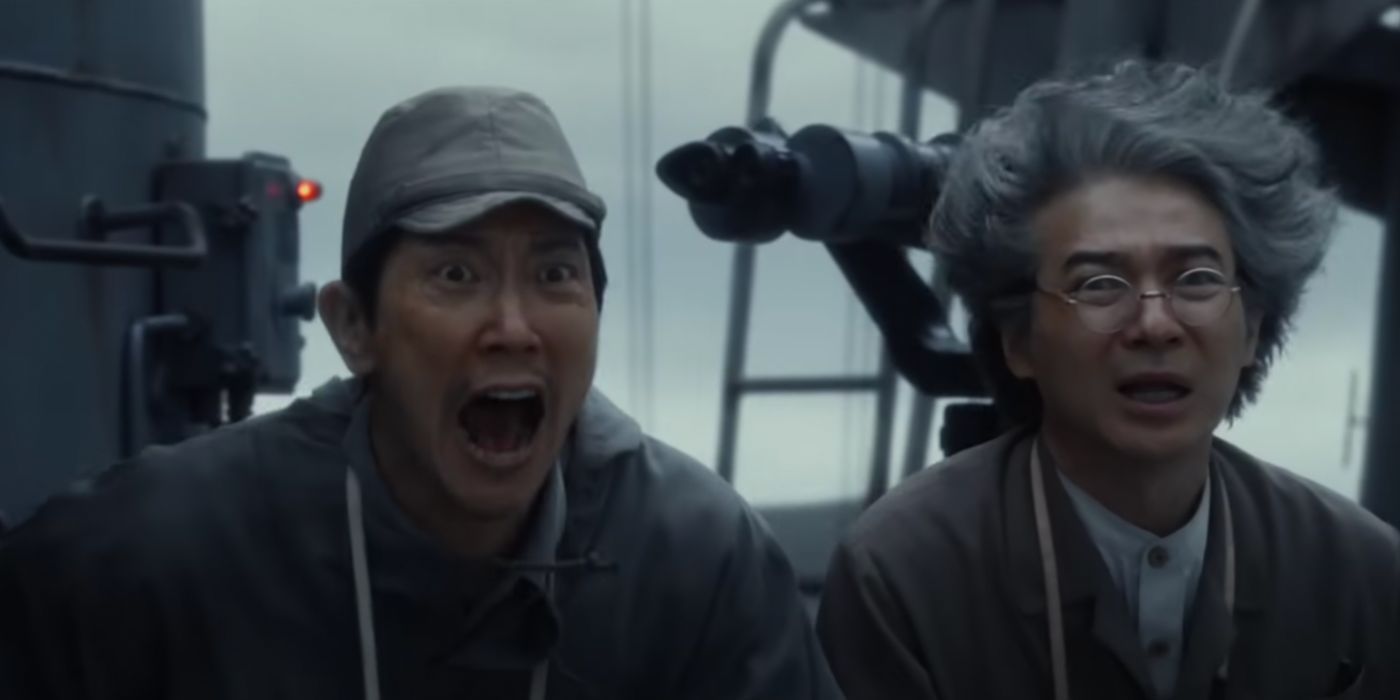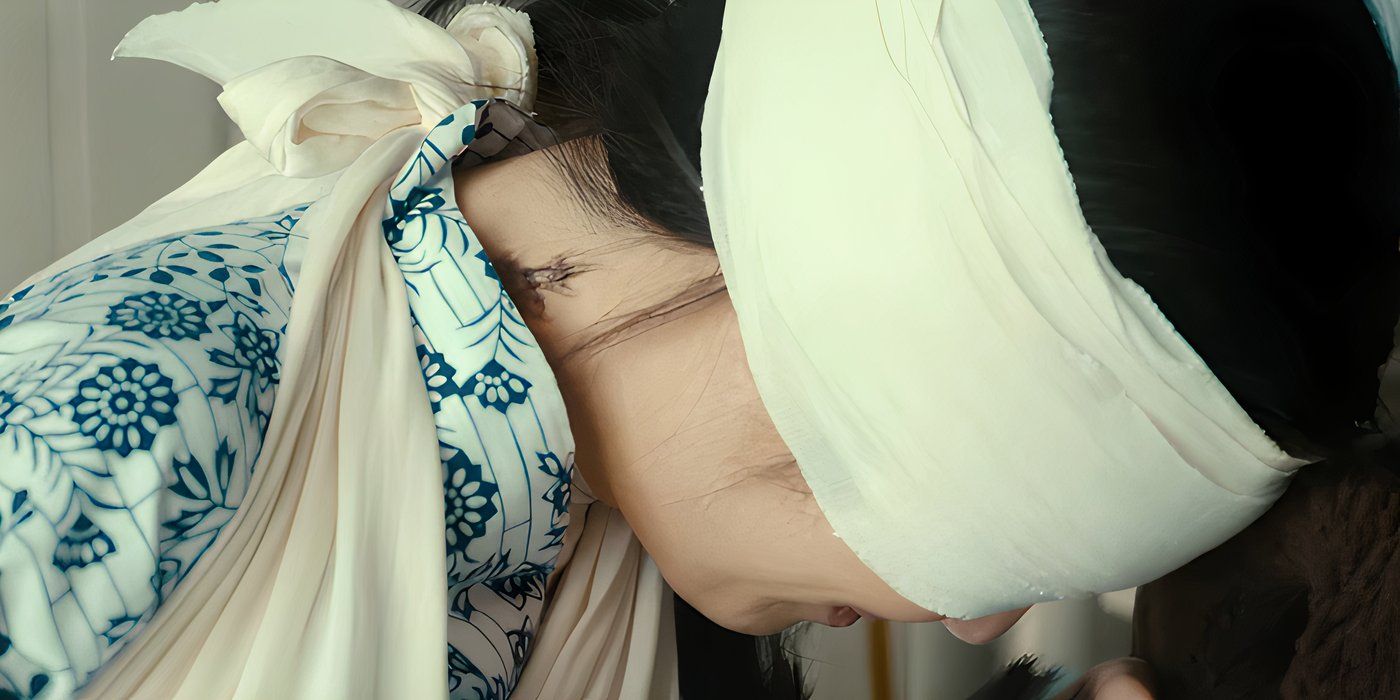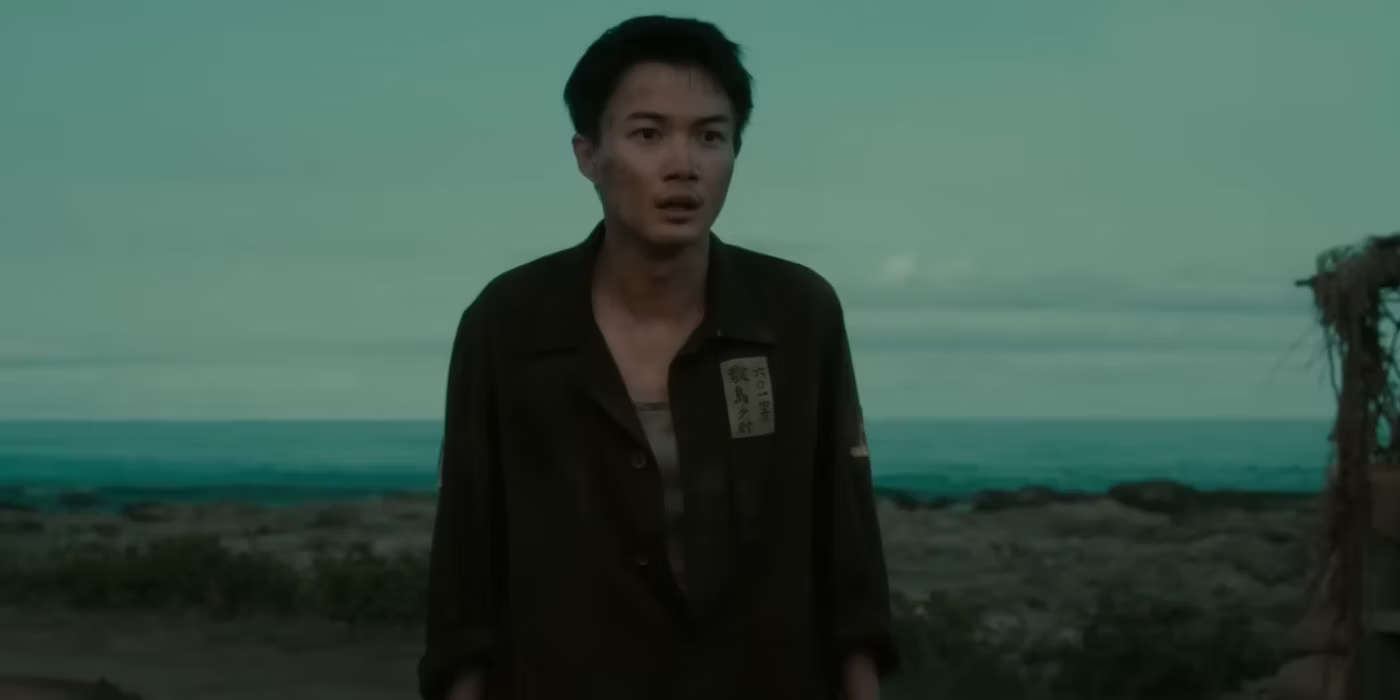Summary
- Godzilla Minus One’s ending features a unique scientific plan for defeating Godzilla, involving Freon tanks and high-pressure balloons.
- Noriko survives Godzilla’s attack, but bears the marks of radiation sickness, setting up potential connections to future kaiju.
- The ending of Godzilla Minus One provides a thematic salute to Godzilla, reflecting on themes of trauma, hope, and rebuilding.
Godzilla Minus One has been embraced by fans, critics, and even the 2014 reboot director, and the movie’s climactic conclusion has played a significant role in its near-universal acclaim. The latest Toho production sees Godzilla returning to his terrifying roots, acting as a destructive antagonist to mainland Japan. The movie follows Kōichi Shikishima, a former kamikaze pilot who elects to forgo his self-sacrificial duty at the end of World War II. Shikishima makes a new life in the ruins of Tokyo with a young woman, Noriko, and an orphaned baby, Akiko, both of whom he chooses to take in upon his return home.
Just as Shikishima and the rest of Tokyo seem to finally be making progress in rebuilding, Godzilla attacks the city, fresh off a size and power boost at the hands of the infamous Bikini Atoll nuclear tests. During the course of Godzilla’s first attack on the mainland, Shikishima’s partner Noriko is seemingly killed by the kaiju’s new powers, which bring new levels of destruction that mimic an actual atomic bomb detonation. Devastated and consumed by desperate rage, Shikishima throws himself into a citizen-driven plan hatched by one of his compatriots to deal with Godzilla once and for all.
How Godzilla Was Finally Defeated In Godzilla Minus One’s Ending
A citizen-driven scientific plan is used in lieu of conventional arms.
The plan hatched in Godzilla Minus One by Shikishima’s fellow minesweeper, former scientist and weapons technician Kenji Noda, involves luring Godzilla into the bay near Tokyo, surrounding him with Freon tanks and rupturing them. This aerates the water around Godzilla, causing him to sink extremely quickly to the trench 1500 meters below sea level, with the hope being that the pressure at that depth would crush him. If that should fail, highly-pressurized balloons would be inflated underneath Godzilla, causing him to ascend quickly back to the surface and die due to explosive decompression.
The plan almost goes off perfectly, with Shikishima both luring and distracting Godzilla with a specialized plane so that the destroyers have time to wrap Godzilla with the Freon tanks. However, as the balloons bring Godzilla back to the surface, he tears through them, causing a frantic scramble to continue his ascension using the destroyers and a bevy of citizen-operated tugboats. When he finally emerges at the surface, Godzilla is injured but not dead, and he begins to charge up his heat ray. Shikishima uses this opportunity to fly his plane, which is loaded with extra explosives, into Godzilla’s mouth.
The resulting explosion destroys Godzilla’s head and overloads his atomic breath, which results in his entire body disintegrating into the sea. Shikishima, who successfully ejected before the plane hit Godzilla, reunites with Akiko, and to his surprise finds an injured but alive Noriko in a nearby hospital. While the reunion of the makeshift family is joyous, a zoom-in on Noriko’s neck reveals that she is likely suffering from some type of radiation sickness due to being caught in the blast of Godzilla’s heat ray.
Related
This 68-Year-Old Monster Movie Is Due For A Remake (& Godzilla Minus One Proves It)
In addition to providing hope for a sequel, Godzilla Minus One’s success shows that it’s time a 68-year-old monster movie finally received a remake.
Godzilla Minus One Teases The Monster Will Survive
Godzilla’s unique regenerative abilities come into play after his apparent death.
The movie’s final frames show a chunk of Godzilla’s disintegrated flesh sinking into the sea, but as it does, it begins to bubble. Throughout the movie, Godzilla showcases extraordinary regenerative abilities, and the implication is that a new Godzilla may evolve from the piece of flesh. The version of Godzilla that attacks Tokyo in Godzilla Minus One is technically dead given that its entire body broke down, but the film leaves Godzilla’s future intentionally ambiguous.
If Godzilla’s flesh continues to regenerate, could it completely recreate Godzilla’s full form? If so, would that creature have his memories or would it be a new creature entirely? All of these questions remain unanswered, but all are broached by the mysterious ending. Godzilla Minus One concludes on a satisfying yet somewhat tragic note, but the regenerating flesh indicates that Godzilla survived in some way, and that the battle against him is not over.
How Did Noriko Survive Godzilla’s First Attack?
Noriko is assumed dead for most of the back half of the movie.
For a majority of the second half of the movie, it’s assumed that Noriko was killed along with many others when Godzilla fired his heat ray against the city, which resulted in an atomic bomb-like blast that decimated everything. However, the movie’s conclusion reveals that she survived, albeit with major injuries. This is actually believable given the mechanism of the blast she is caught in; it’s largely kinetic, throwing both people and tons of rubble and debris back and forth but not actually burning it. The chances of survival would be roughly similar to surviving a building’s collapse – unlikely, but possible.
The black marks on Noriko and her other injuries show that she definitely didn’t make it away unscathed, with the attack having a massive effect on her. However, Noriko was able to defy the odds and survive the attack, avoiding a tragic death.
The Black Marks On Noriko’s Neck Explained
They set up Noriko’s connection to future kaiju.
Unfortunately, Noriko may not survive for very long. The final zoom-in on her skin reveals black marks that indicate she is suffering from some level of radiation sickness. This further proves just how directly Godzilla’s heat ray in Godzilla Minus One is intended to mimic an actual atomic explosion. Noriko bears marks of radiation sickness, just like so many victims of the bombings of Hiroshima and Nagasaki at the conclusion of World War II.
These radiation marks are meant to be G-cells, which could lead Noriko down a couple of interesting paths in a potential Godzilla Minus One sequel. G-cells have been known to create kaiju in previous Godzilla movies, but it could also potentially give her a connection to the regrown monster in future entries.
Why Did Tachibana Help Shikishima Survive His Mission?
The engineer gives Shikishima a chance at a better future.
Tachibana is the only other member of the repair team on Odo Island that survived the original, smaller Godzilla’s 1945 attack that Shikishima survived. He knows that Shikishima lied about his plane’s condition to avoid his duty as a kamikaze pilot, and knows that he failed to fire on Godzilla on Odo Island. Given that knowledge, it would be understandable if he left Shikishima to his original plan for his specialized plane, which was to complete his kamikaze mission and sacrifice himself by flying his plane into Godzilla’s mouth.
However, in a pleasant and inspiring twist, it’s revealed that Tachibana included an ejector seat in the plane as he worked to repair it. Tachibana is even shown celebrating when learning that Shikishima survived his assault on Godzilla. His act of kindness is one of the most powerful symbols of hope in the movie; Tachibana finds a way for Shikishima to survive and carry on, choosing to believe in giving him a second chance as opposed to coldly allowing Shikishima to finish his original kamikaze mission. It emphasizes how important it is to change the old ways in Japan if the country is to rebuild successfully.
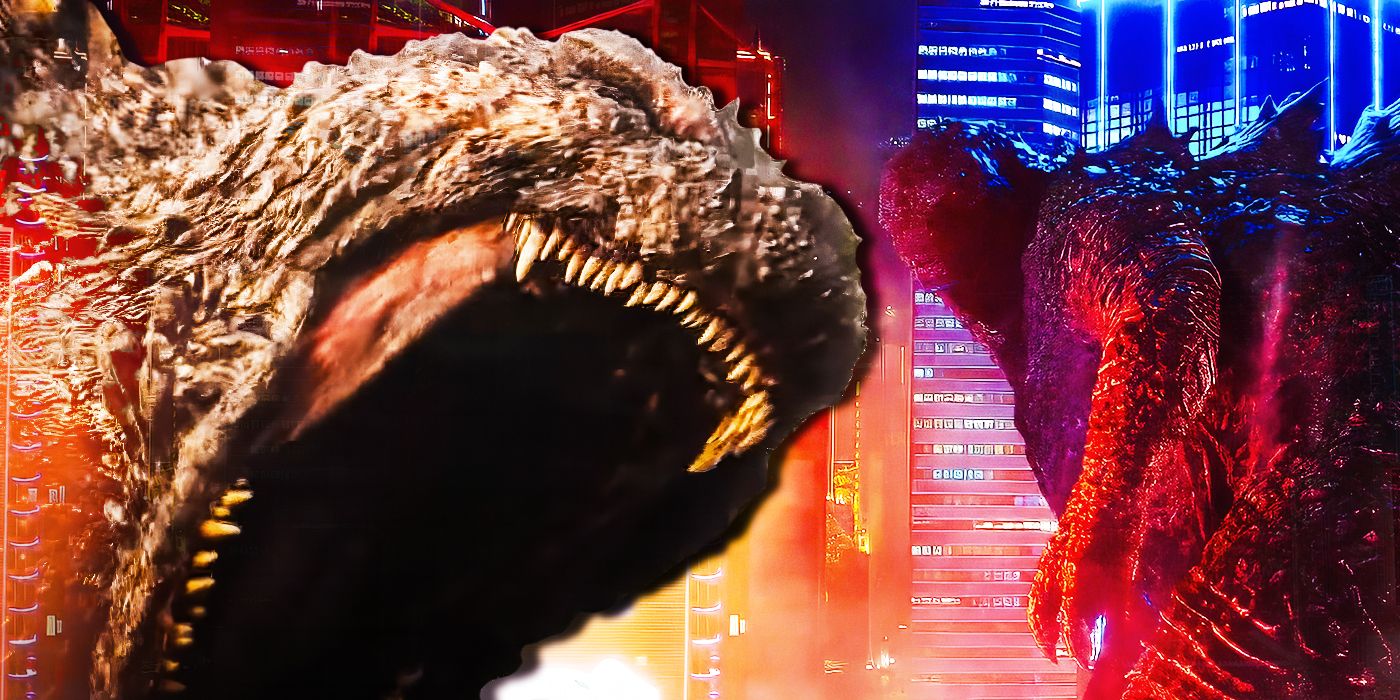
Related
Toho’s New Godzilla Movie Is Already Copying What Made His MonsterVerse Reboot Great
Although Toho has only briefly teased Godzilla Minus One, it looks like the new movie is already copying one of the best parts of the MonsterVerse.
Why The Humans Salute In Godzilla Minus One’s Ending
The humans’ salute serves a thematic purpose.
At the end of Godzilla Minus One, the humans salute Godzilla as he is dying, which may seem like an odd choice considering the death and destruction that the monster caused. However, these salutes serve a thematic purpose, one that is spelled out by the Godzilla Minus One novelization. The humans at the end of the film consider Godzilla and his fate to be a product of humans, with them feeling some sort of guilt for the destruction that the monster caused and his subsequent death.
How Godzilla Minus One Sets Up A Sequel
The door is left open for Godzilla to return.
The regenerating flesh sinking into the sea leaves the door wide open for a sequel to Godzilla Minus One. While it’s safe to assume time will pass as a new Godzilla grows from the small bit of flesh, there is now motivation for Godzilla to return quite literally with a vengeance. Writer-director Takashi Yamazaki has already expressed interest in a sequel, but it remains to be seen if a follow-up will occur, especially given Toho’s agreement with Legendary Pictures to work around the movie schedule of the ongoing Monsterverse. Given that the movie’s Rotten Tomatoes score has already broken records for the Godzilla franchise, a sequel seems likely.
As for Shikishima and his family, their ending is fairly straightforward. Shikishima realizes that he does want to live, having found some reconciliation with his past trauma and guilt by killing Godzilla. Multiple characters tell Shikishima that he should make Noriko his wife, and give form to the love he has for both her and their adoptive daughter Akiko, even if he won’t admit its existence to himself. Their happy reunion at the movie’s conclusion provides a legitimate conclusion to his story, although should a sequel occur, it would be difficult to imagine Shikishima not being involved with fighting Godzilla again.
What Takashi Yamazaki Has Said About A Godzilla Minus One Sequel
In an interview with Empire, Takashi Yamazaki confirmed that a sequel to Godzilla Minus One hasn’t been greenlit yet. However, he did tease what a sequel could be about, with him saying the following:
“I know that Shikishima’s war seems over, and we’ve reached this state of peace and calm – but perhaps [it’s the] calm before the storm, and the characters have not yet been forgiven for what has been imposed upon them.”
2:02
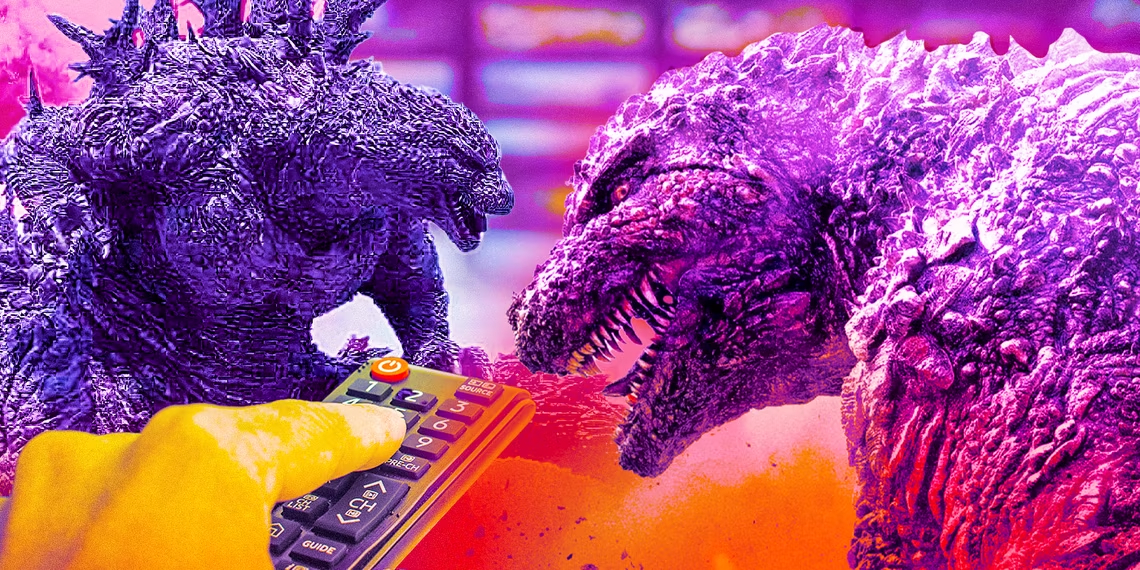
Related
Where To Watch Godzilla Minus One
Godzilla Minus One is the latest movie from Toho, and there are different options to watch the movie in theaters or at home on streaming.
The Real Meaning of Godzilla Minus One’s Ending
The movie packs multiple messages into its narrative.
While Godzilla Minus One directly addresses many of the common themes from Godzilla’s origin, and the time frame in which the movie is set, director Takashi Yamazaka stated in an interview with Aera that he was inspired by the recent COVID-19 pandemic. He hoped to capture the global anxiety and overall unreliability of the world’s governments during the pandemic. There are plenty of direct parallels to be drawn between the dimensions of Japan’s suffering post-WWII and the hopelessness and fear that many felt during the pandemic, and it isn’t hard to imagine Godzilla as the COVID-19 virus itself, a seemingly invincible enemy that was responsible for countless deaths.
Godzilla is the ultimate symbol of the fear that gripped Japan in 1947, and the world at large over the last few years. In Japan, there was fear of further nuclear destruction as U.S. and Soviet tensions rose (which is directly referenced multiple times in the movie), which was what Godzilla originally symbolized way back in his 1954 debut. There was fear of how exposed they were, having just had most of their military power stripped away by the Allies after losing World War II. There was also the underlying fear that the psychological and physical damage done during the war would never heal.
In addition to the contemporary analogies and Godzilla’s symbolism, there are two overarching and conflicting themes explored in Godzilla Minus One: hope for the future and the lasting scars of trauma. Trauma manifests itself in several forms throughout the course of the movie, the most obvious of which is Shikishima’s survivor’s guilt. Shikishima is able to escape death on three significant occasions (his kamikaze mission, Godzilla’s attack on Odo Island, and Godzilla’s first attack on the mainland) while those around him die. Shikishima’s trauma is so intense that he suffers from an aggressive form of impostor syndrome, where he questions whether he’s even really alive.
Trauma is also explored on a much larger scale, as the entire Japanese population carries scars of World War II, soldiers and non-combatants alike. The soldiers have all experienced the horror of war, while civilians who remained in Japan suffered their own unimaginable losses in the firebombing and nuclear attacks that brought Japan to its knees in 1945. Each citizen has their own unique variations, but trauma was a universal condition for the people of Japan at that point in history.
The other major theme counteracts that exploration of trauma: hope for future generations of Japan. Akiko acts as a representation for all the children who will be born and grow up in the ashes of World War II. It’s for those children that Shikishima and his fellow veterans step up to defeat Godzilla, so that they might have a chance at a better future in a fully rebuilt Japan. As mentioned, Tachibana’s inclusion of an ejector seat in Shikishima’s plane symbolizes how hope is born from establishing a new status quo, and not clinging to the self-destructive tendencies of Japan’s past.
The film’s resolution does come with some additional powerful underlying messages, which prove to be some of the most poignant ever seen in a Godzilla movie. Godzilla Minus One addresses the utter disregard for their own citizens’ lives that the Japanese government displayed during World War II, and for much of the time before the war as well. Shikishima’s refusal to execute a kamikaze mission earned him scorn at first, but by the end of the movie, his decision is supported by those who know they all deserve better than to be sacrificial lambs, dying for no purpose other than outdated notions of honor and duty.
The other major message of the movie’s ending speaks to not only Japan in the post-war period, but to the entire planet in its current state. The movie’s coalition of veterans and citizens work together to find a solution to stop Godzilla, and ultimately to build a better future. That’s the key takeaway: the only way that a country, society or even species can rebuild and be better is by helping one another. Godzilla Minus One manages to pack an astounding amount of depth into its runtime, and while Godzilla will always be the star, the movie is driven wholeheartedly by its powerful human stories.
Source: Aera, Empire
